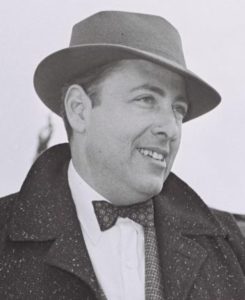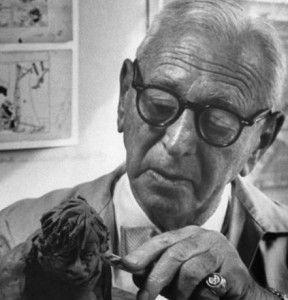America’s Tolstoy

Herman Wouk
Herman Chaim Aviezer Zelig Wouk (1915-2019) was born in New York to poor Russian-Jewish immigrants. He studied at Columbia University and was the editor of its humour magazine. He also took courses at Yeshiva University. After graduating, Wouk worked as a radio actor, and when World War II began, wrote radio commercials in support of the war effort. Wouk enlisted in the army himself after Pearl Harbour, and served in the Navy in the Pacific. He fought in eight battles, won a bunch of medals, and rose to the rank of lieutenant. It was during this time that he wrote his first novel. He sent a copy to an old professor, who passed it on to a publisher, who sent Wouk a contract to his base near Okinawa. The book was published in 1947, shortly after Wouk returned from military service. It was an instant hit. Wouk’s second novel didn’t do so well, but his third, 1951’s The Caine Mutiny, sold a whopping three million copies, won a Pulitzer Prize, and was adapted to a Broadway play, followed by a Hollywood film. A few years later and after another bestseller (also made into a Hollywood film), Wouk was on the cover of TIME magazine. Throughout this time, he maintained strict observance of the Torah and was deeply religious. This was inspired by his grandfather, who taught Wouk the Torah and Talmud in his youth. Wouk would later state that his grandfather and the Navy were the two biggest influences in his life. In 1959, he wrote his first book of non-fiction, This is My God: The Jewish Way of Life. The book was credited with opening up Judaism to the American mainstream, enlightening the world about Jews, and helping to counter anti-Semitic myths. It also showed Jews that it was possible to be modern, American, and Orthodox. His third non-fiction book was about the interplay between religion and science. He also wrote a two-volume, 2000-page war drama likened to War and Peace. Altogether, Wouk wrote 21 books and plays, many of which were adapted into films or TV shows. His last was a memoir published when he was 100 years old. Wouk won countless awards and honourary degrees, and was described by the Library of Congress as an “American Tolstoy”. Stephen King wrote an award-winning short story called Herman Wouk is Still Alive. Wouk is considered by many to be the most successful Orthodox Jewish author to date. Sadly, Wouk passed away two weeks ago, just days shy of his 104th birthday, and in the middle of writing his newest book.
Words of the Week
That idea, that life is here purely for personal pleasure, that is a goal in life for a herd of swine.
– Albert Einstein



